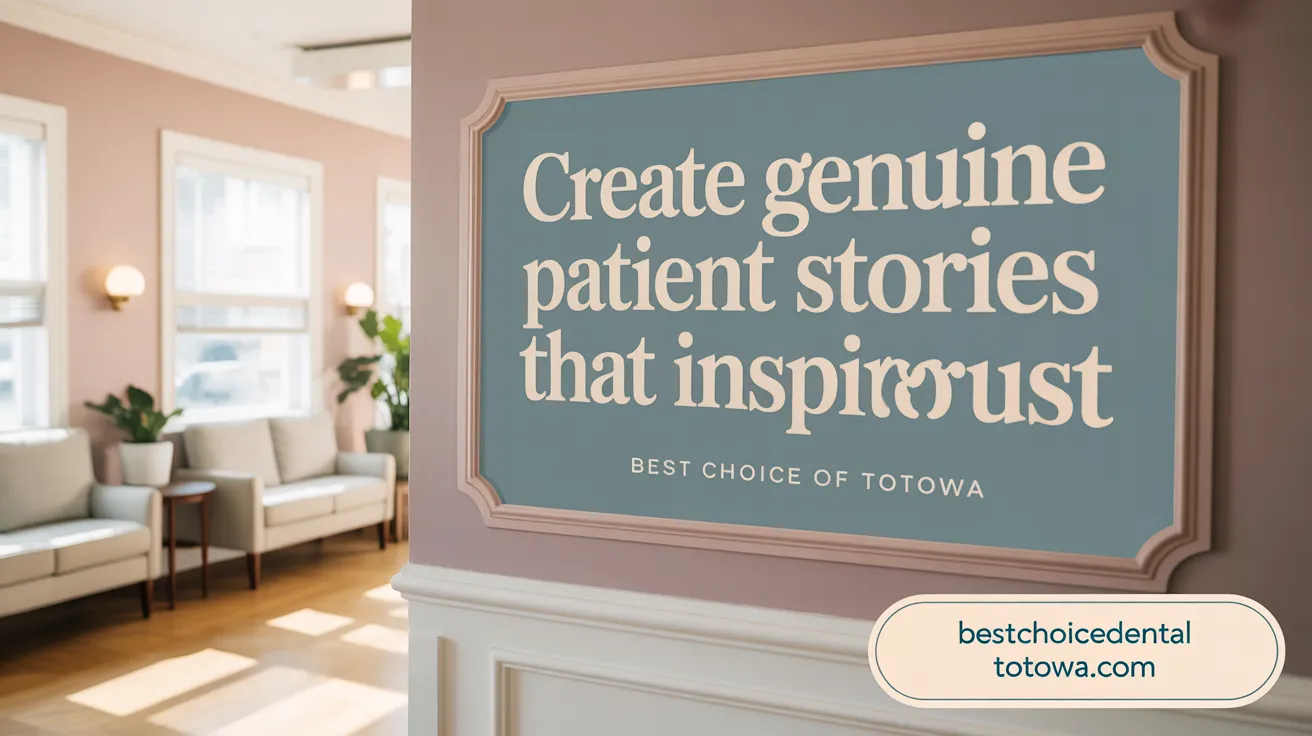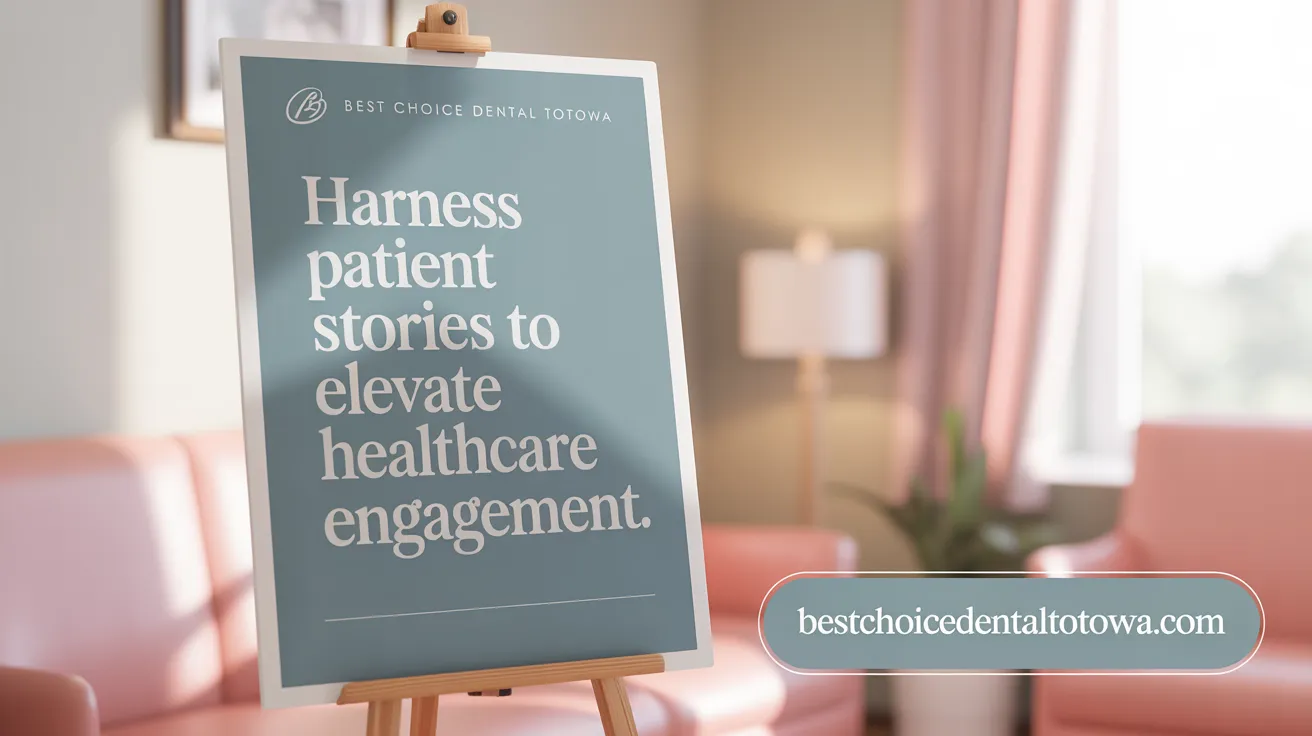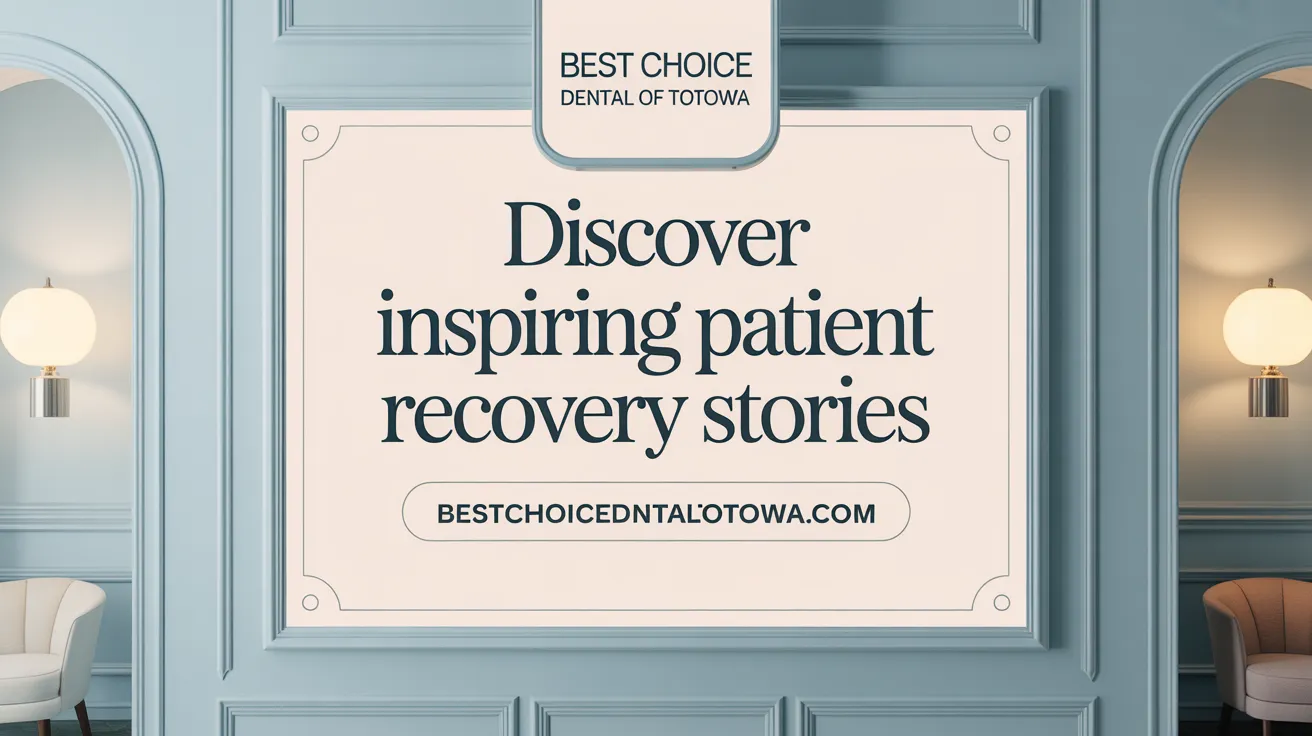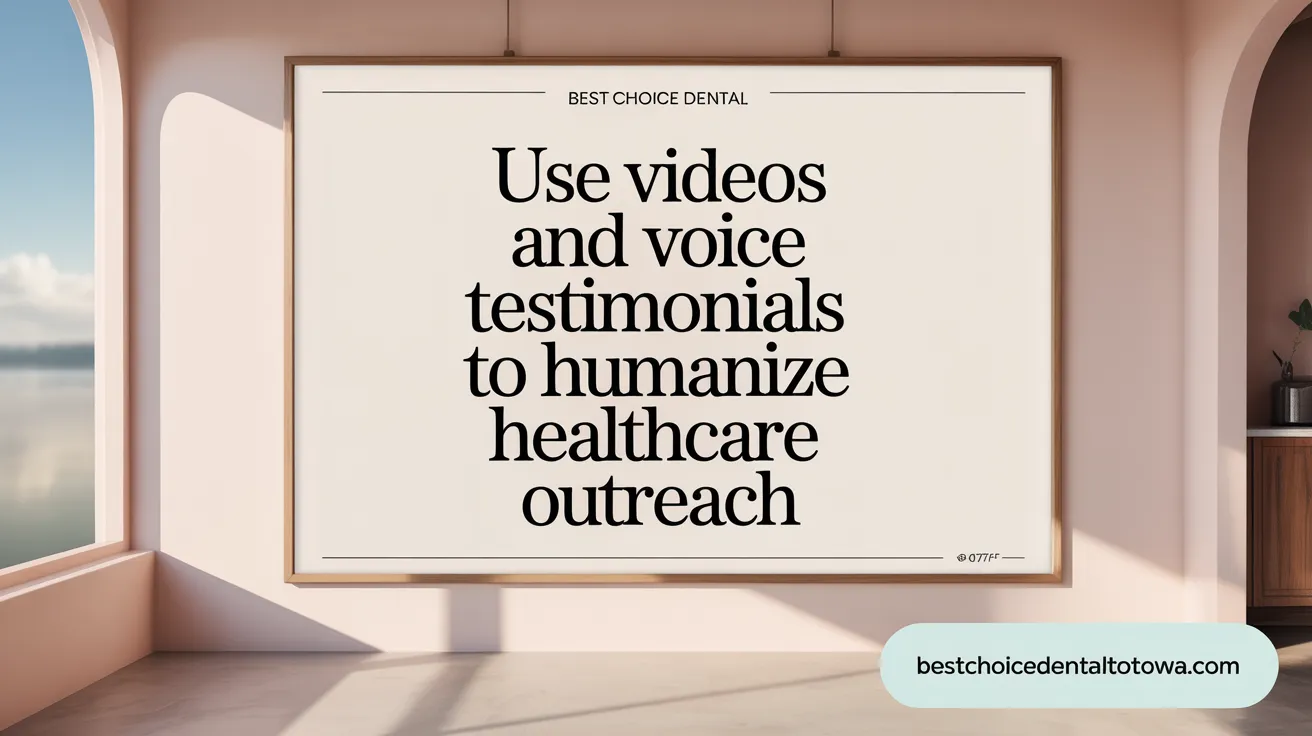Understanding the Power of Patient Voices
Patient testimonials have emerged as vital tools in modern healthcare, helping institutions build trust, enhance reputations, and foster patient-centered care. Through authentic stories of recovery, challenge, and hope, these narratives provide not just insights into treatment outcomes but also humanize the healthcare experience. This article explores the significance of patient testimonials, their role in marketing and community engagement, the best practices for capturing impactful stories, and how they ultimately improve healthcare services.
The Vital Role and Benefits of Patient Testimonials in Healthcare
Why are patient testimonials important and what benefits do they provide?
Patient testimonials serve as authentic voices that vividly share real healthcare experiences, making them invaluable in shaping perceptions of healthcare quality. These stories offer genuine insights into patient journeys, treatment successes, and emotional resilience, helping prospective patients gain clarity and confidence in choosing a provider. Sharing authentic testimonials can boost trust and credibility, demonstrating a healthcare facility’s commitment to patient-centered care.
Furthermore, testimonials humanize medical care, transcending clinical data to show the personal impacts of treatment. They foster peer support by illustrating that others have faced similar health challenges and found positive outcomes. This relatability can inspire hope and motivation among current and future patients. For more on how patient stories support engagement, see Science Behind Patient Stories.
How do testimonials build trust and credibility?
Effective testimonials—obtained with proper consent—highlight consistent positive outcomes and compassionate care, reinforcing a provider’s reputation. Patients are more likely to trust clinics or hospitals that showcase real stories from real people, as these stories are perceived as more sincere than polished advertising. Learn about building trust with patient testimonials.
When patients see diverse experiences, including successful treatments, recovery stories, and compassionate staff interactions, they feel assured of the quality and empathy they will receive. This credibility encourages engagement, loyalty, and positive word-of-mouth, which are crucial for practice growth. Explore using testimonials to increase credibility.
In what ways do testimonials humanize healthcare and support peer connections?
Personal stories forge emotional bonds between healthcare providers and the community. They demonstrate that behind every clinical case is a person with hopes, fears, and triumphs. Such narratives make healthcare more approachable and relatable, reducing feelings of isolation often associated with illness.
Peer support is amplified when individuals recognize their own experiences reflected in shared stories. Testimonials can motivate others to seek care early, adhere to treatment plans, and participate actively in their health management. See research on patient stories enhancing peer support.
What are the ethical considerations regarding patient privacy?
Respect for patient privacy is paramount. Healthcare providers must obtain explicit written consent before sharing any patient story that includes identifiable information, images, or testimonials. Ethical practices involve honest representation, avoiding exaggeration, and ensuring stories are authentic. More on ethical sharing of patient testimonials.
Properly anonymized stories or those shared with patient permission uphold ethical standards while still leveraging the powerful impact of real experiences. This balance of transparency and privacy builds trust and demonstrates respect for patient autonomy. For guidelines, refer to HIPAA compliance for patient testimonials.
In summary, patient testimonials are more than marketing tools; they are bridges that connect the human side of healthcare with educational and quality improvement efforts. When ethically managed, they reinforce credibility, inspire hope, and cultivate a patient-centered culture that values lived experiences. For additional insights, see Patient Testimonials and Their Benefits.
Building Trust and Shaping Patient Decisions through Testimonials

How do patient testimonials influence trust, reputation, and patient decision-making in healthcare?
Patient testimonials play a crucial role in shaping how prospective patients perceive healthcare providers. These personal stories offer authentic insight into patients' positive experiences, which helps to build confidence and emotional connections with potential patients. When individuals read or hear about successful treatments, compassionate care, and favorable outcomes, they are more likely to trust the provider and choose their services. See more on the Power of Patient Testimonials in Healthcare Marketing.
Testimonials act as social proof, confirming the quality and reliability of healthcare practices. They differentiate a facility from competitors and add credibility, especially when shared across multiple platforms such as websites, social media, and review sites. The impact is significant: research shows that nearly 95% of online users consult patient testimonials before making healthcare decisions. Positive reviews can boost appointment conversions and increase revenue, while negative reviews can harm reputation if not managed properly. Learn about Marketing Power of Testimonials and their impact in healthcare.
Effective collection of genuine testimonials involves follow-up surveys and obtaining explicit patient consent, respecting privacy and HIPAA regulations. Displaying real stories with relatable details enhances perceived authenticity, which is vital in sustaining trustworthiness. Guidance on Capturing Compelling Patient Testimonials helps ensure authenticity while maintaining compliance.
In summary, patient testimonials significantly influence both trust and reputation. They are powerful tools that inform and reassure potential patients, guide their decisions, and foster long-term loyalty. Proper management of testimonials—ensuring authenticity, privacy, and strategic sharing—can reinforce a practice’s reputation and lead to sustained growth in a competitive healthcare market. For more insights, explore Patient Testimonials Success Stories and Patient Stories Impact.
Best Practices for Gathering, Managing, and Utilizing Patient Feedback
How can healthcare providers gather, manage, and utilize patient feedback and testimonials effectively?
Healthcare providers can adopt a comprehensive approach to collecting feedback by using various methods to ensure all patient experiences are captured. Short, clear surveys administered immediately after appointments or hospital stays, both electronically and on paper, help gather specific insights on scheduling, staff support, and overall satisfaction.
Online review platforms and social media channels offer additional avenues for patients to share their opinions freely. Incorporating direct interviews or follow-up calls can deepen understanding and gather detailed testimonials. Building a culture centered on transparency and responsiveness is essential. When patients see that their feedback leads to tangible improvements, they develop trust and feel valued.
Utilizing advanced, AI-enabled tools streamlines the analysis process. Automated systems can quickly identify trends, sentiment, and areas needing attention in real time. This allows healthcare organizations to respond promptly to both positive and negative feedback, demonstrating their commitment to continuous quality improvement.
Closing the feedback loop by thanking patients and demonstrating how their suggestions prompted change encourages ongoing engagement. Authentic patient stories and testimonials, showcased through websites, social media, and marketing campaigns, serve as powerful motivators for staff and reinforce a positive reputation. These stories also guide targeted improvements, helping healthcare organizations evolve into truly patient-centric environments.
Crafting Authentic and Impactful Patient Testimonials
 Creating patient testimonials that truly resonate with prospective patients requires a thoughtful approach. Honesty and detail are the cornerstones of compelling stories. Patients should share genuine experiences, emphasizing specific outcomes and emotional journeys, which help build credibility and trust.
Creating patient testimonials that truly resonate with prospective patients requires a thoughtful approach. Honesty and detail are the cornerstones of compelling stories. Patients should share genuine experiences, emphasizing specific outcomes and emotional journeys, which help build credibility and trust.
Securing clear, written consent is crucial to protect patient privacy and ensure ethical sharing, especially when multimedia content such as videos and photographs are involved. Healthcare providers must comply with HIPAA regulations, making consent explicit and documented.
To help patients tell their stories effectively, providers can guide them with targeted questions. These might explore initial challenges, impactful treatments, and feelings of hope or gratitude. Such guided storytelling encourages depth and authenticity, making testimonials more relatable and memorable.
Showcasing a diversity of experiences and demographics further enhances credibility. Different ages, conditions, and backgrounds demonstrate the hospital's broad reach and personalized care.
Strategically placing testimonials across various channels—like websites, social media, and marketing materials—can amplify their impact. Regular updates keep the content fresh and relevant, reinforcing positive perceptions and continually building trust.
In summary, authentic patient stories, obtained and shared ethically, serve as powerful tools that humanize healthcare, foster emotional connections, and strengthen a provider’s reputation in an increasingly competitive field. For more insights, see The Science Behind Patient Stories and The Power of Patient Testimonials in Healthcare Marketing.
Patient Narratives Driving Healthcare Marketing, Engagement, and Research
 Patient stories serve multiple roles in modern healthcare, especially in marketing and community engagement. They humanize medical services, transforming clinical care into relatable experiences that foster trust and credibility. Authentic testimonials and personal journeys shared via videos, social media, or print showcase real patient successes, making potential patients more comfortable and motivated to seek care.
Patient stories serve multiple roles in modern healthcare, especially in marketing and community engagement. They humanize medical services, transforming clinical care into relatable experiences that foster trust and credibility. Authentic testimonials and personal journeys shared via videos, social media, or print showcase real patient successes, making potential patients more comfortable and motivated to seek care.
In community outreach efforts, patient narratives help healthcare providers better understand diverse patient needs and cultural backgrounds. By listening to and highlighting these stories, organizations can tailor their services, improve accessibility, and strengthen relationships within the community (patient stories in healthcare).
Beyond marketing, patient narratives offer therapeutic benefits. Sharing their experiences can provide emotional relief and a sense of empowerment for storytellers, boosting their recovery and well-being. These stories also motivate others who face similar health challenges, encouraging proactive health behaviors (inspirational medical stories).
In research and policy development, incorporating patient stories helps contextualize quantitative data, revealing social and emotional factors affecting health outcomes. Storytelling within behavioral science frameworks advances patient-centered approaches, guiding interventions and informing policies that resonate with real-world experiences (The Science Behind Patient Stories).
Overall, integrating patient narratives into healthcare strategies fosters emotional connections, enhances engagement, and supports continuous improvement in care quality and patient loyalty. As a powerful communication tool, stories bridge the gap between clinical data and human experience, creating a more compassionate, effective healthcare environment (Patient Testimonials and Success Stories).
Showcasing Treatment Successes through Patient Stories
Patient success stories serve as compelling testimonials that vividly demonstrate outcomes across various medical conditions. These narratives highlight how innovative treatments and personalized care lead to tangible improvements—whether it’s a patient overcoming cancer through early diagnosis and advanced therapy or an individual regaining mobility after complex surgery. For example, stories of patients who have undergone successful surgical interventions, such as heart transplants or minimally invasive brain tumor removals, showcase the effectiveness of cutting-edge medical techniques (Emory Healthcare Patient Stories, Brigham and Women's Hospital Patient Stories).
Non-surgical successes are equally inspiring. Patients managing chronic illnesses with new medication regimens, participating in clinical trials, or benefiting from modern diagnostic tools illustrate that recovery is not confined to surgical procedures alone. These stories often include patients with conditions like epilepsy, tinnitus, diabetes, or rare tumors, emphasizing the breadth of treatments that yield positive results (Sound Relief Tinnitus & Hearing Center Patient Stories, Northwell Health Success Stories).
Beyond physical health, these stories play a vital role in fostering hope and motivation. They give potential patients confidence that effective care exists and that recovery or significant health improvements are possible. Sharing these journeys also humanizes healthcare, making complex medical science more relatable and trustworthy (PMC Patient Stories, The Science Behind Patient Stories).
Moreover, patient stories frequently highlight the role of innovative treatments and ongoing research. For instance, breakthroughs like gene therapy, advanced imaging technologies, and regenerative medicine are often featured in success narratives. They showcase how research translates into real-world benefits, strengthening public trust in medical advancement (Emory Healthcare Cancer Gene Silencing Research, Brigham and Women's Advances in Surgery).
Ultimately, these stories act as a bridge of trust, reinforcing the quality and compassion of healthcare providers. They demonstrate that behind each medical procedure is a person who has experienced improvement, inspiring others to seek care and supporting continued investment in medical research and innovation (Patient Testimonials Impact, Patient Feedback Importance).
The Strategic Use of Patient Feedback to Enhance Patient-Centered Care
How can the use of patient feedback enhance patient-centered care and improve healthcare services?
Incorporating patient feedback collection into healthcare delivery is essential for creating a truly patient-centered approach. By systematically collecting insights from patients through surveys, online reviews, and direct engagement, healthcare providers gain a clearer understanding of patients' experiences, preferences, and areas where services may fall short. These insights shed light on specific issues such as communication gaps, long wait times, or inadequate follow-up, enabling targeted improvements.
Analyzing feedback involves organizing data to identify recurring themes or concerns, which then inform quality improvement initiatives. Engaging both staff and patients in discussions about this data fosters a shared commitment to ongoing enhancement. For instance, patient advisory councils or co-design programs encourage patients to participate actively in redesigning care processes, ensuring solutions are tailored to their needs.
Effective communication of feedback results and subsequent changes builds transparency and trust, motivating patients to remain involved in their care journey. This process not only elevates service quality but also contributes to better health outcomes by aligning healthcare practices more closely with patient expectations.
Ultimately, organizations that leverage feedback effectively can achieve higher patient satisfaction and loyalty, establish a culture of continuous improvement, and deliver more compassionate, efficient, and effective healthcare services.
Real-Life Examples: Patient Experiences Reflecting Quality Care

Diverse patient stories of recovery and gratitude
Patients’ personal stories vividly illustrate the compassionate and effective care provided by healthcare institutions. For instance, a patient's wife expressed heartfelt thanks for the attentive care received in the ICU, noting that staff kept the family well-informed during a critical health crisis. Similarly, a COVID-19 patient who endured weeks of intensive treatment was discharged after four months, with staff gathering to celebrate his remarkable recovery, reinforcing the hospital’s role in saving lives (ICU Care Appreciation).
Examples from ICU, cancer care, smoking cessation
ICU testimonials reveal the long-term impacts of critical care, where patients report overcoming delirium and cognitive challenges, highlighting the hospital's dedication to comprehensive recovery (ICU delirium symptoms). In cancer treatment, early diagnosis enabled prompt interventions—such as a breast cancer patient whose abnormal mammogram led to immediate biopsy and ongoing care—demonstrating the importance of advanced imaging and swift action (Breast Cancer Diagnosis and Treatment).
Community vaccination drives and support
Hospitals also serve broader public health functions. A successful COVID-19 vaccination campaign, administering over 500 doses with the help of volunteers, underscores the community’s trust and the institution’s commitment to safety and accessibility (Community COVID-19 Vaccination Efforts).
Staff compassion and professionalism
Across all experiences, patients commend staff for their kindness, professionalism, and clear communication. Families shared stories of nurses and registration personnel who went beyond mere duties—delivering breakfast, offering emotional support, and facilitating smooth procedures—creating a sense of trust and reassurance (Kind and Efficient Hospital Staff).
Impact of advanced diagnostics and treatments
Utilization of cutting-edge diagnostics—such as MRI, breast CT scans, and minimally invasive surgeries—has significantly improved patient outcomes. Patients benefit from timely, precise diagnoses and innovative treatments, including voice laser therapy and transcatheter procedures, marking the hospital’s commitment to medical excellence (Advanced Breast Imaging).
| Patient Experience | Description | Impact |
|---|---|---|
| ICU recovery stories | Patients overcoming critical conditions | Long-term health improvements (Patient Testimonials) |
| Cancer diagnosis | Early detection through advanced imaging | Timely treatment and better prognosis (Breast Cancer Diagnosis and Treatment) |
| Community support | Vaccination campaigns organized with volunteers | Increased public health and trust (Community COVID-19 Vaccination Efforts) |
| Staff compassion | Kindness and clarity during care | Enhanced patient trust and satisfaction (Kind and Efficient Hospital Staff) |
Leveraging Multimedia and Technology for Patient Testimonial Sharing

Importance of Video and Voice Testimonials
Video and voice testimonials are increasingly vital tools in healthcare marketing. They provide a genuine and emotional connection that written stories often lack. Patients sharing their experiences through videos or recordings help prospective patients relate personally, building trust and credibility. Research shows that testimonials, especially in video form, are among the most effective content marketing strategies, with 89% of marketers considering video the top format. Learn more about the Power of Patient Testimonials and Capturing Patient Testimonials.
Platforms for Sharing Testimonials
Healthcare providers can showcase patient stories across various platforms. Websites and social media channels, such as Facebook, YouTube, and Instagram, are ideal for reaching broad audiences. Additionally, embedding video testimonials on practice pages or using snippets in email campaigns enhances engagement. Clinics may also consider creating dedicated testimonial sections that highlight success stories, ensuring accessibility and visibility. Examples and tips can be found in Patient Testimonials Benefits and Using Testimonials on Websites.
HIPAA Compliance and Consent Management
Sharing patient testimonials ethically requires strict adherence to HIPAA regulations. Healthcare providers must obtain explicit, written consent from patients before sharing videos or voice recordings that reveal personal health information. This consent process should be documented clearly, explaining how the testimonial will be used. Respecting patient privacy not only fosters trust but also avoids legal issues. For guidance, see HIPAA Compliance for Patient Reviews and Legal Considerations for Testimonials.
Engaging Prospective Patients through Authentic Stories
Authentic testimonials are powerful in influencing healthcare choices. Real patient stories that highlight successful outcomes, compassionate care, and personal journeys resonate deeply with viewers. Engaging narratives humanize healthcare services, encouraging new patients to seek care at the facility. Including diverse patient voices can also broaden appeal and demonstrate inclusivity. For inspiring examples, visit Patient Testimonials and Success Stories, Life-Changing Patient Stories, and Inspiring Patient Stories at Orlando Health.
Feedback Loops to Improve Care and Satisfaction
Utilizing testimonials and feedback collected via multimedia can create a continuous improvement cycle. Listening to patient stories reveals insights into what works well and where gaps exist. This feedback helps healthcare organizations refine services, enhance communication, and foster a patient-centric culture. Encouraging patients to share their experiences in multimedia forms not only benefits marketing efforts but also drives quality improvements. Explore strategies for Patient Feedback Collection and Improvement, Positive Feedback Examples, and Improving Patient Satisfaction.
Empowering Care Through the Voices of Patients
Patient testimonials are more than just stories; they are powerful catalysts that build trust, shape healthcare experiences, and drive quality improvements. By valuing and effectively managing patient feedback, healthcare providers can foster patient-centered environments that encourage healing, hope, and ongoing engagement. Authentic patient narratives, whether shared through compelling videos or heartfelt written words, connect communities, inspire confidence, and propel advances in care. Listening closely to these voices ensures that healthcare not only treats illnesses but also uplifts lives, making every patient a vital part of the healing journey.
